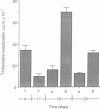Abstract
Tunicate pharyngeal cells include lymphocyte-like cells and granular amoebocytes. They are involved in the specific allogeneic and phagocytic reactions of tunicates. Little is known about their regulation or control. A tunicate interleukin 1 (IL-1)-like fraction is shown to stimulate the proliferation of these cells in vitro. This fraction, designated tunicate IL-1 beta, was isolated from tunicate hemolymph by gel filtration and chromatofocusing chromatography. Mitogenic responses to tunicate IL-1 beta were dose dependent and could be eliminated rapidly by removing tunicate IL-1 beta from culture medium. A second tunicate hemolymph fraction had no effect on tunicate cell proliferation even though it exhibited IL-1-like activity in a mouse thymocyte proliferation assay. Phytohemagglutin did not act synergistically with either fraction. These data are discussed in terms of the function and evolution of IL-1-like molecules in invertebrates.
Full text
PDF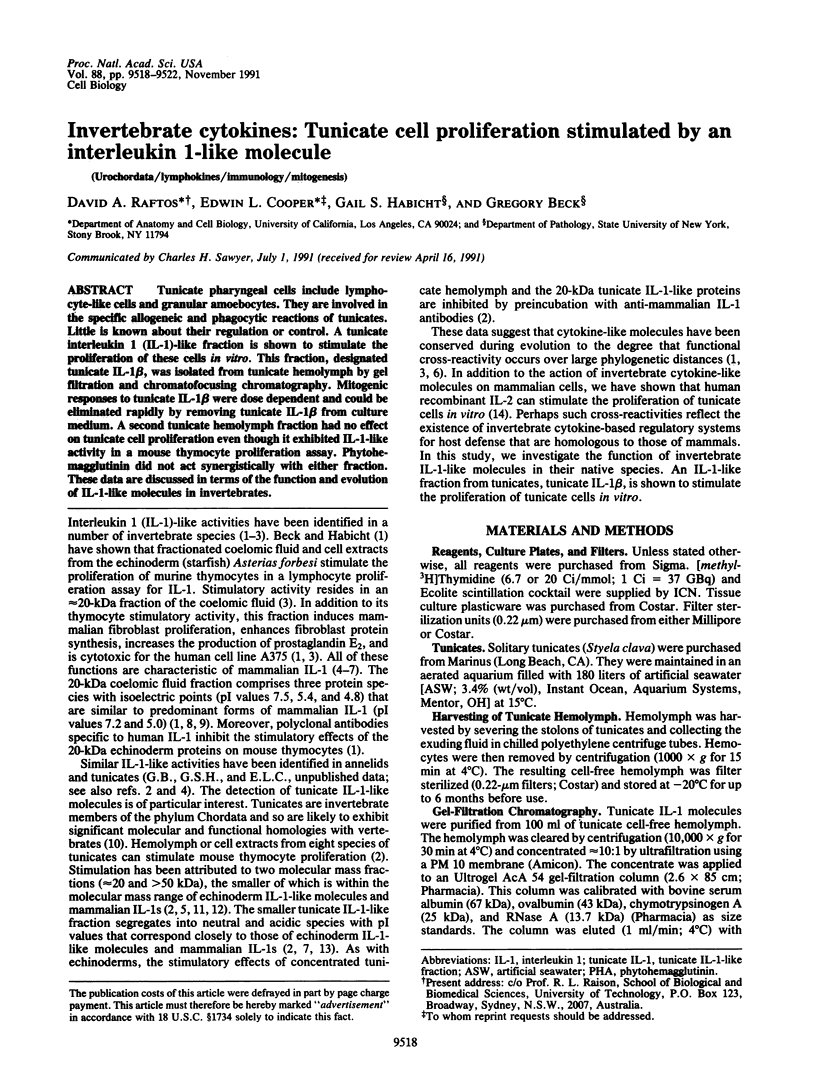
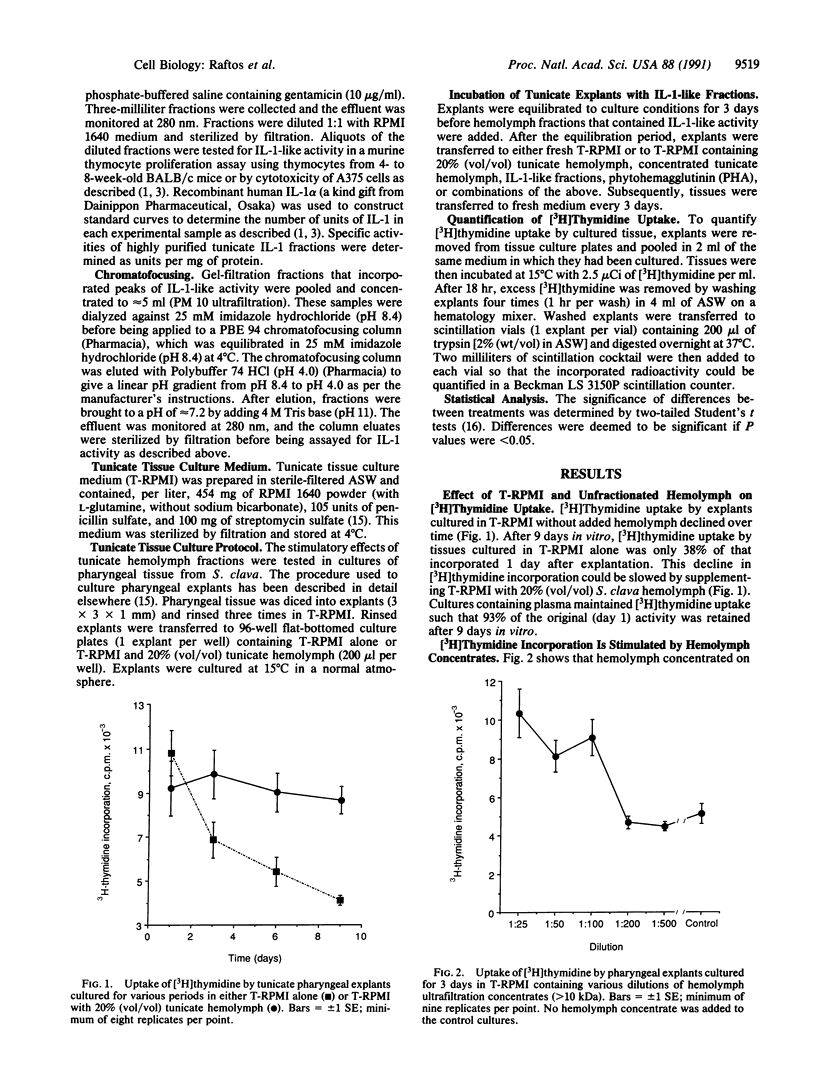
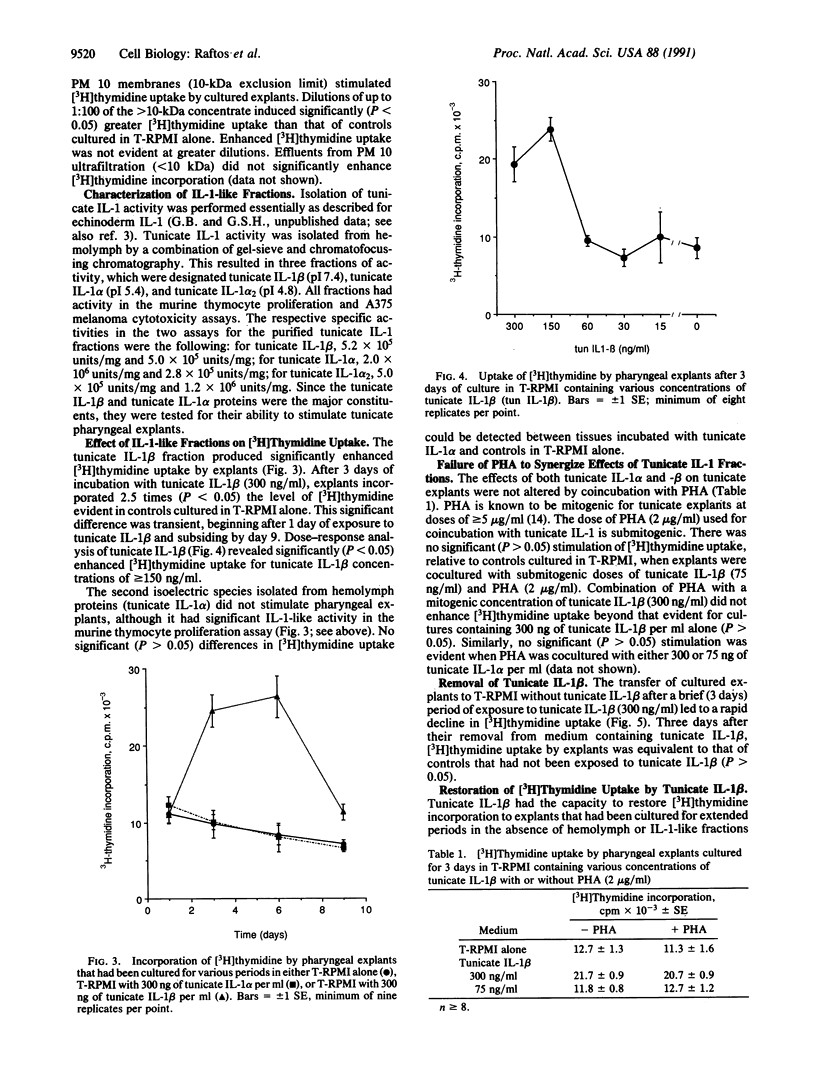
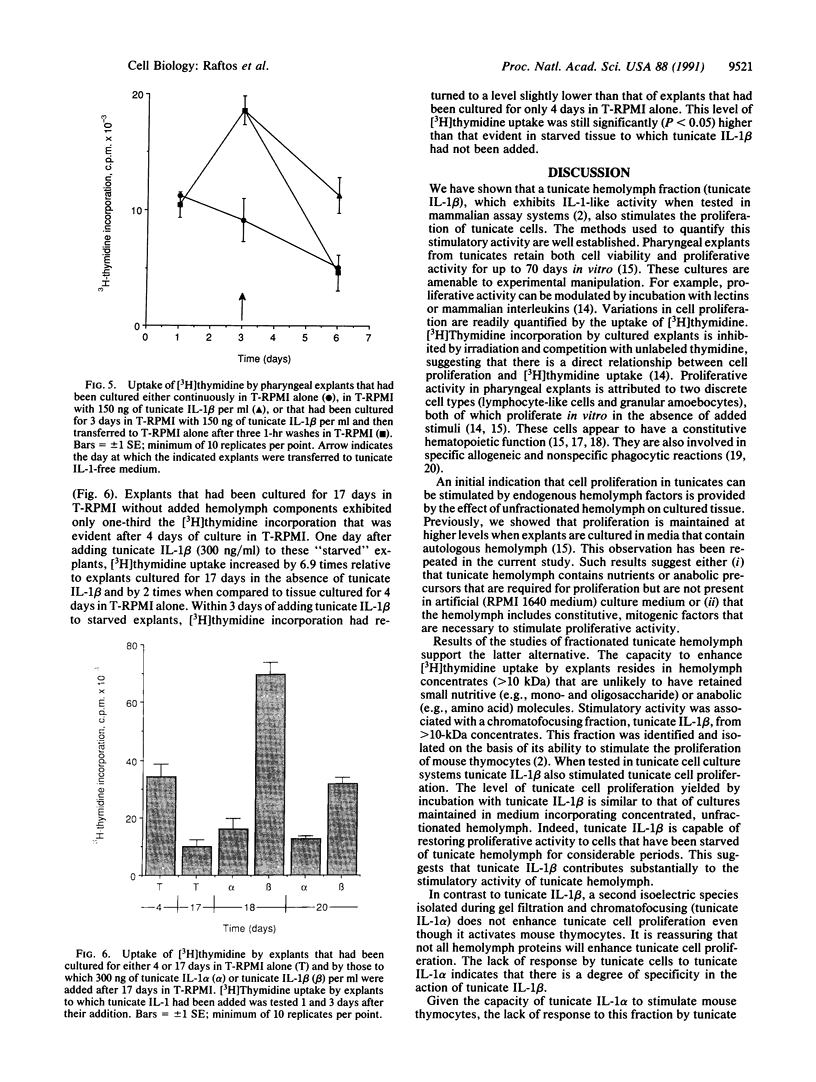
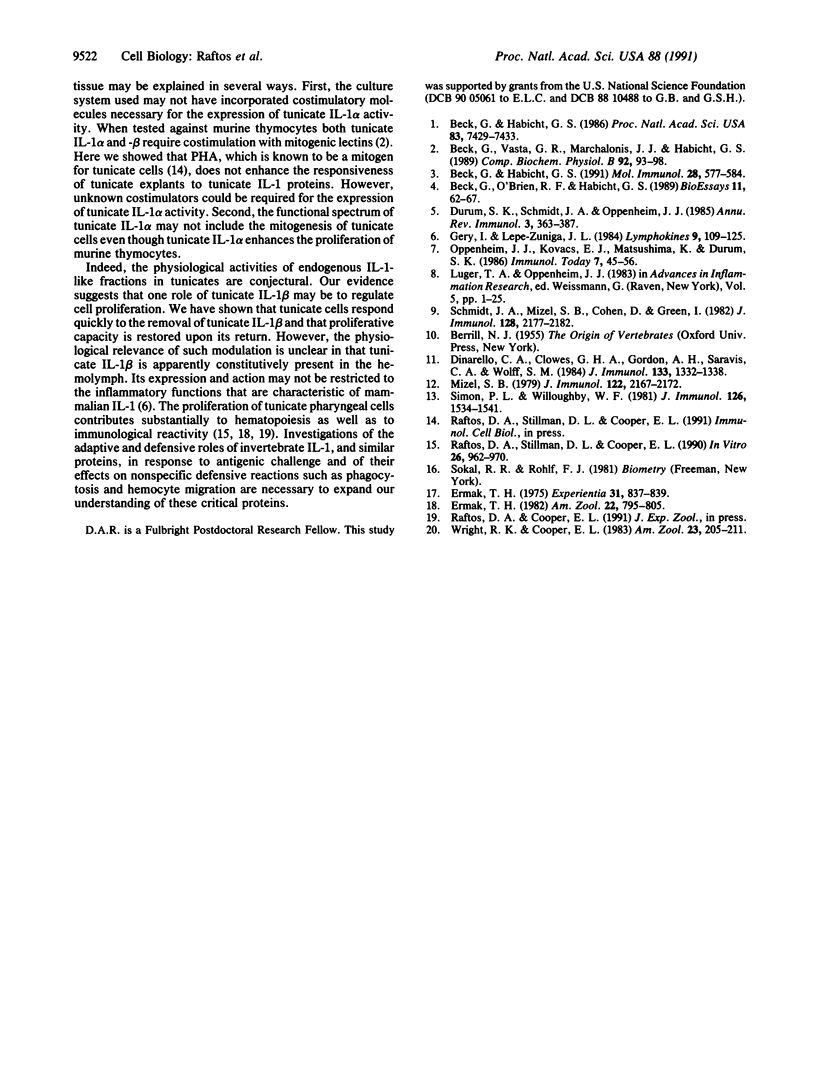
Images in this article
Selected References
These references are in PubMed. This may not be the complete list of references from this article.
- Beck G., Habicht G. S. Isolation and characterization of a primitive interleukin-1-like protein from an invertebrate, Asterias forbesi. Proc Natl Acad Sci U S A. 1986 Oct;83(19):7429–7433. doi: 10.1073/pnas.83.19.7429. [DOI] [PMC free article] [PubMed] [Google Scholar]
- Beck G., Habicht G. S. Purification and biochemical characterization of an invertebrate interleukin 1. Mol Immunol. 1991 Jun;28(6):577–584. doi: 10.1016/0161-5890(91)90126-5. [DOI] [PubMed] [Google Scholar]
- Beck G., O'Brien R. F., Habicht G. S. Invertebrate cytokines: the phylogenetic emergence of interleukin-1. Bioessays. 1989 Aug-Sep;11(2-3):62–67. doi: 10.1002/bies.950110206. [DOI] [PubMed] [Google Scholar]
- Beck G., Vasta G. R., Marchalonis J. J., Habicht G. S. Characterization of interleukin-1 activity in tunicates. Comp Biochem Physiol B. 1989;92(1):93–98. doi: 10.1016/0305-0491(89)90318-0. [DOI] [PubMed] [Google Scholar]
- Dinarello C. A., Clowes G. H., Jr, Gordon A. H., Saravis C. A., Wolff S. M. Cleavage of human interleukin 1: isolation of a peptide fragment from plasma of febrile humans and activated monocytes. J Immunol. 1984 Sep;133(3):1332–1338. [PubMed] [Google Scholar]
- Mizel S. B. Physicochemical characterization of lymphocyte-activating factor (LAF). J Immunol. 1979 Jun;122(6):2167–2172. [PubMed] [Google Scholar]
- Raftos D. A., Stillman D. L., Cooper E. L. In vitro culture of tissue from the tunicate Styela clava. In Vitro Cell Dev Biol. 1990 Oct;26(10):962–970. doi: 10.1007/BF02624470. [DOI] [PubMed] [Google Scholar]
- Schmidt J. A., Mizel S. B., Cohen D., Green I. Interleukin 1, a potential regulator of fibroblast proliferation. J Immunol. 1982 May;128(5):2177–2182. [PubMed] [Google Scholar]
- Simon P. L., Willoughby W. F. The role of subcellular factors in pulmonary immune function: physicochemical characterization of two distinct species of lymphocyte-activating factor produced by rabbit alveolar macrophages. J Immunol. 1981 Apr;126(4):1534–1541. [PubMed] [Google Scholar]



